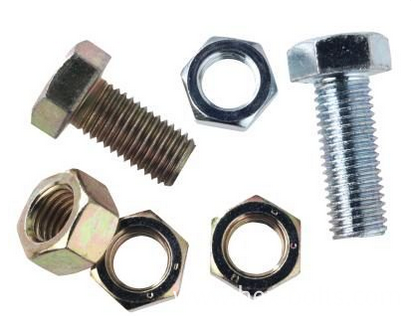Ancient Screws
Hex-head nuts and
BOLTS are part of a fastening system that uses screw threads. Screw threads date back to Assyrian King Sennacherib in the seventh century BCE. Sennacherib used screws as part of the pumps that fed the water systems for the Hanging Gardens of Babylon. The Greek mathematician, Archytas of Tarentum, described wooden screw threads in the third century BCE, and by the first century BCE wooden screws were widely used in oil and wind presses. These were usually attached to some sort of permanent handle as a turning device.
Metal Screws
Metal screws and bolts first appeared in Europe in the 1400s, but did not become a common fastener until the 18th century, when machine tools were developed that could manufacture them. Between 1770 and 1798, British instrument maker Jesse Ramsden, British engineer Henry Maudslay and U.S. inventor David Wilkins all patented screw-cutting lathes for making threaded rods. Early screws tended to be custom made with square bolt heads. Replacement bolts were all custom made and therefore not available in large enough quantities to become widely used.
Standardization
Square-head bolts were common in early applications because they were easier to make with the tools, metals and techniques of the time. Square heads require less accurate tolerances, so that a wrench that might not be the exact size of a bolt but be near enough to turn a hand-machined square bolt head. Square heads, however are large and require more room to turn. By 1841, British toolmaker Joseph Whitworth and his American counterpart, William Sellers of the Franklin Institute had proposed creating a system of standardized screw threads. Standardized bolts and nuts soon followed as toolmakers developed new techniques for making them in quantity.
Bessemer
Between 1856 and 1876, British Metallurgist Sir Henry Bessemer developed the Bessemer process, a way to mass produce cheap mild steel. When machinists used cast iron and cruder forms of steel, square bolt heads were easier to make. As machinery became smaller and more compact, however, the hex-head bolt evolved to meet the need for more compact bolt heads.
Mass Production
In 1830 James Nasmyth, an assistant to Henry Maudslay, designed a pioneering milling attachment for Maudslay's bench lathe to make a large batch of hex-head bolts for a scale model they were building for the London Science Museum. By the 1840s, cold-heading machines became available for stamping metal. It took until the 1880s, when Bessemer steel mills began producing the new mild steel in accurate thicknesses and quantity, before cold-heading machines began punching out
Hex Nuts. This innovation meant that nuts stamped from flat metal stock and machined to exact tolerances could be screwed onto bolts made by the new screw-making machines in mills anywhere in the country. Larger hex nuts quickly replaced square bolt heads in heavy industrial applications.





